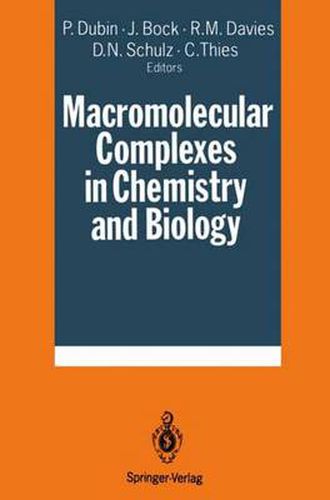Readings Newsletter
Become a Readings Member to make your shopping experience even easier.
Sign in or sign up for free!
You’re not far away from qualifying for FREE standard shipping within Australia
You’ve qualified for FREE standard shipping within Australia
The cart is loading…






This title is printed to order. This book may have been self-published. If so, we cannot guarantee the quality of the content. In the main most books will have gone through the editing process however some may not. We therefore suggest that you be aware of this before ordering this book. If in doubt check either the author or publisher’s details as we are unable to accept any returns unless they are faulty. Please contact us if you have any questions.
Throughout most of this century, progress in Polymer Science took place by way of studies of dilute polymer solutions and of the solid state. More recently, attention has been focused on the semi-dilute regime. The elucidation of transi- ent network and temporal gel states under conditions of moderate concentra- tion by numerous hydrodynamic and optical techniques is now well established and a solid theoretical underpinning for these phenomena is in place. However, in most of the systems studied, interpolymer interactions are relatively weak forces, because in solutions oftypical polymers, strong interpolymer interactions lead to bulk phase separation. However, polymers that form highly associating structures in equilibrium solution now constitute an important class of synthetic macromolecules, and it is evident that strong intermacromolecular interactions - without accompanying phase separation - are prevalent in biopolymer sys- tems as well. This behavior is generally characteristic of amphiphilic polymers, which contain both hydrophilic and hydrophobic repeat units. It is also charac- teristic of systems in which two macromolecular species are complementary, such as hydrogen-bond-donating and hydrogen-bond-accepting polymers, or polycations and polyanions. Interest in associating polymer systems currently derives from both applied and fundamental questions. Synthetic water-soluble polymers bearing hydro- phobic groups exhibit special rheological properties that make them well-suited as thickeners and viscosity-modifiers. Drag-reduction effects may arise in such polymer solutions, and may also be observed in polymer complexes based on hydrogen-bonding.
$9.00 standard shipping within Australia
FREE standard shipping within Australia for orders over $100.00
Express & International shipping calculated at checkout
This title is printed to order. This book may have been self-published. If so, we cannot guarantee the quality of the content. In the main most books will have gone through the editing process however some may not. We therefore suggest that you be aware of this before ordering this book. If in doubt check either the author or publisher’s details as we are unable to accept any returns unless they are faulty. Please contact us if you have any questions.
Throughout most of this century, progress in Polymer Science took place by way of studies of dilute polymer solutions and of the solid state. More recently, attention has been focused on the semi-dilute regime. The elucidation of transi- ent network and temporal gel states under conditions of moderate concentra- tion by numerous hydrodynamic and optical techniques is now well established and a solid theoretical underpinning for these phenomena is in place. However, in most of the systems studied, interpolymer interactions are relatively weak forces, because in solutions oftypical polymers, strong interpolymer interactions lead to bulk phase separation. However, polymers that form highly associating structures in equilibrium solution now constitute an important class of synthetic macromolecules, and it is evident that strong intermacromolecular interactions - without accompanying phase separation - are prevalent in biopolymer sys- tems as well. This behavior is generally characteristic of amphiphilic polymers, which contain both hydrophilic and hydrophobic repeat units. It is also charac- teristic of systems in which two macromolecular species are complementary, such as hydrogen-bond-donating and hydrogen-bond-accepting polymers, or polycations and polyanions. Interest in associating polymer systems currently derives from both applied and fundamental questions. Synthetic water-soluble polymers bearing hydro- phobic groups exhibit special rheological properties that make them well-suited as thickeners and viscosity-modifiers. Drag-reduction effects may arise in such polymer solutions, and may also be observed in polymer complexes based on hydrogen-bonding.